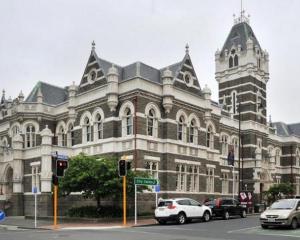
Helios will present its application to a three-day resource consent hearing in Ranfurly next week, starting on Tuesday.
The company plans to build and operate a grid scale solar farm on land between Ranfurly-Naseby Rd and Naseby Back Rd, south of the town of Naseby. It will leave about 665ha for the solar farm.
The application said the proposed solar farm would include 550,810 2.4m-wide solar panels mounted on tracking arrays that would give the panels a maximum height of about 2.8m above ground level, and would change their orientation across each day to track the sun.
The panels would be mounted on arrays in rows about 6m-8m apart. The applicant anticipates these panels and associated buildings would cover about 23% of the site — 155ha — at their maximum site coverage, when the panels are flat.
The applicant anticipates the facility would have a generation capacity of about 300MW. The Roxburgh Hydro Station produced a maximum of 320MW.
Cables would need to cross the central wetland in the site, the applicant proposed.
The application originally included a large battery energy storage system for storing generated electricity. This facility has subsequently been removed from the application.
The entire facility is proposed to be enclosed in a 2m-high deer fence with inward-pointed security cameras.
The applicant intended the land under the site would continue to be farmed by the landowner, most likely using the land for grazing sheep. The sheep would keep the pasture down.
Once operational the site would not be permanently staffed.
Central Otago District Council planning officer Adam Vincent said any visual impact from the panels should be negated by plantings which would take five years to grow, an acceptable time frame for the proposal.
The two largest wetlands on the site would be fenced off and de-stocked, allowing for positive benefits on wetland quality through ending livestock entering the wetland and browsing.
Mr Vincent acknowledged in his report there was a real risk of fire at the solar farm but the materials used in solar farms meant any fire would be slow.
He agreed with many submitters the solar farm would substantially change the character of the landscape but screenings and sheep grazing would maintain a rural character.
There were significant economic benefits to building the solar farm.
He recommended consent be granted.
"The proposal would provide for the establishment and operation of a new renewable power generation facility in a manner that adequately maintains rural character and avoids, remedies or mitigates its significant adverse environmental effects," the report said.
The Upper Clutha Environment Society has come out in support of the proposal. The society has opposed many development proposals in the Upper Clutha but is supporting the solar farm in the Maniototo.
While it accepted the adverse affects on the landscape would be more than minor, the positive effects of the renewable generation would far outweigh those adverse effects. The visual effects of solar power were far less than wind power, and its turbines.
Others were not as supportive with fourth generation Maniototo farmer Peter Hore saying the information provided was vague and sketchy.
He raised fire risk and said the solar farm would mean Central Otago was no longer a "world of difference".
Oturehua resident Anne Kirk said she had concerns about the noise and scale of the farm. It had a footprint three times the size of Ranfurly and would take two years to build.
Helios had indicated it would not be building the solar farm until 2029.












